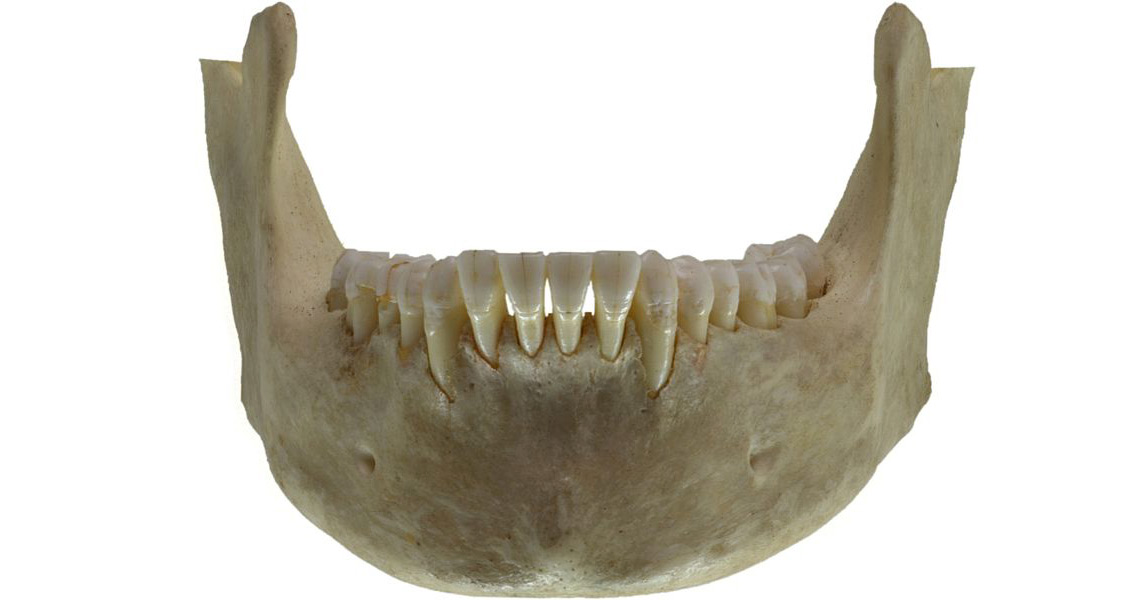<![CDATA[A new study based on the DNA analysis of an ancient human jawbone discovered thirteen years ago in Romania has supplied new proof of interbreeding between Homo sapiens and Neanderthals in Europe as recently as 36,000 years ago. The international team of scientists sequenced the genome of the individual to whom the bone belonged and found it was between 6% and 9% Neanderthal, which is the highest proportion of Neanderthal DNA in a modern human so far discovered. To compare, modern-day Europeans have between 2% and 4% Neanderthal DNA in their genome. While earlier research has established that interbreeding occurred between Homo sapiens and Neanderthals some 55,000 years ago, the BBC notes, this was believed to have happened in the Middle East, apparently before our species spread into Europe. Now, it seems that interbreeding continued to take place much later as well. The jawbone was discovered in the Petera cu Oase (literally the Cave of Bones) in southwestern Romania in 2002 and was dated to between 34,000 and 36,000 years ago. It was considered to be the earliest evidence of the modern human presence in Europe. At the time of discovery some scientists believed that it was possible for the bone to have belonged to a hybrid between Homo sapiens and Neanderthals, although this suggestion was met with serious opposition from researchers who believed the rate of interbreeding had been very low. Thanks to modern technology, the initial suggestion has now been confirmed. David Reich from Harvard Medical School, one of the authors of the paper titled “An early modern human from Romania with a recent Neanderthal ancestor”, told the BBC the finding was a surprise because despite the growing body of evidence about hybridisation between hominin species, none of the researchers expected to find proof of such recent interbreeding. DNA showed that between just four and six generations separated the Neanderthal ancestor from the Oase man. Yet this man, interestingly, was not as closely related to modern-day Europeans as one would expect based on the location where his jawbone was found. In fact, his genome revealed he was genetically closer to East Asians and Native Americans. The BBC quotes Reich as saying that "It is evidence of an initial modern human occupation of Europe that didn't give rise to the later population. There may have been a pioneering group of modern humans that got to Europe, but was later replaced by other groups." Isolating DNA for genome-sequencing was difficult because the sample was mixed with huge quantities of genetic material from other organisms present in the soil where it was found. To make things even harder, most of the human DNA eventually isolated belonged to the researchers who had handled the bone. The problem was solved by another of the study authors, Qiaomei Fu, who only focused on those bits of human DNA which displayed a specific kind of damage that is only present in DNA after thousands of years. Speaking to New Historian about the research, anthropologist Nick Winder, co-author of the Vulnerable Apes hypothesis, added another perspective to the question of interbreeding: it may well be the case that the Neanderthal who passed his or her genes to the Oase man also had Homo sapien genes from an earlier hybridisation. This suggestion points to a greater than traditionally believed complexity of human evolution, especially in light of other recent studies that have revealed the Neanderthals were far from the primitive cavemen we used to think they were. For more information: An early modern human from Romania with a recent Neanderthal ancestor Image courtesy of Wikimedia Commons user: Gregory F. Maxwell]]>
More Evidence of Human-Neanderthal Interbreeding in Europe
